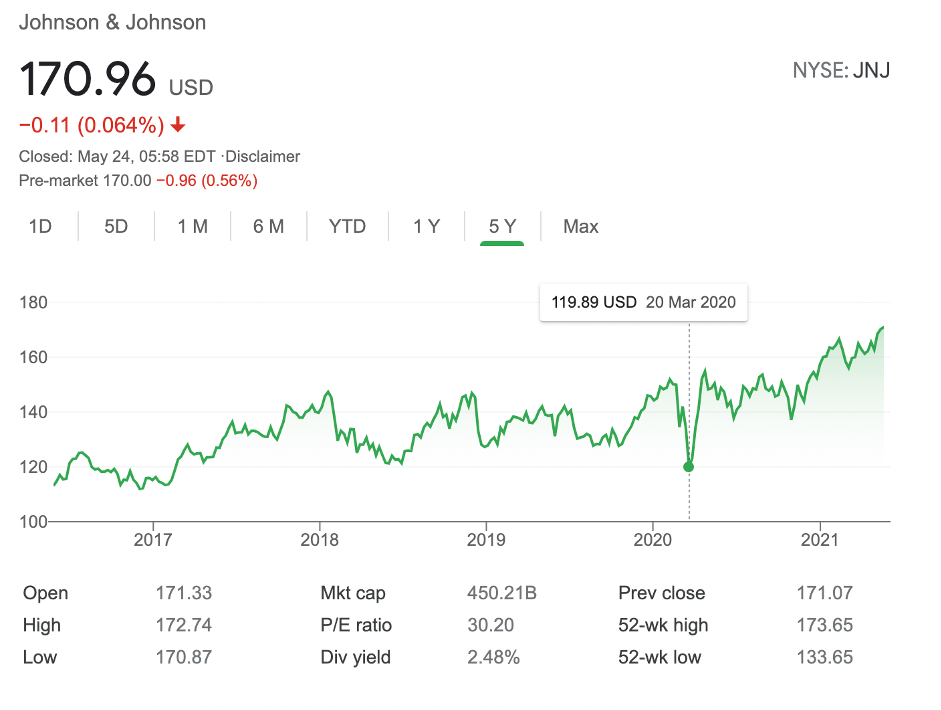Because of Pfizer and Moderna, Johnson & Johnson has not shared much of the spotlight during the pandemic. In fact, they had a rough go of it in recent months, with the United States government recommending a pause of the administration of the company’s vaccine. In April, however, the Food and Drug Administration and the Centres for Disease Control issued a joint statement about the safety of the company’s vaccine, and therefore they lifted the pause. As of April 2021, some 6.8 million Americans have received the Johnson & Johnson vaccine. The company’s one-shot vaccine will likely have a much larger impact globally since most countries are in a “take what we can get” mode to ensure their economies can reopen in short order.
But enough about vaccines. Johnson & Johnson is a massive organisation with over 132,000 employees. COVID did not stop their operations; it just focussed the world’s attention on one particular subset of the firm. Now, Johnson & Johnson’s other business ventures will have the chance to share the stage. J&J is a classic American company that has been around since 1886, and it ranks in the Top 50 among American company as far as revenue. The J&J brand consists of over 250 brands spread throughout 60 countries. Its three main business sectors are pharmaceuticals (55% of revenue), medical devices (28%), and consumer health (17%).
How did COVID affect J&J?
There are countless household brands under the J&J umbrella, including Tylenol, Aveeno, Listerine, Band-Aid, Neutrogena, Pepcid, and Zyrtec. Altogether, these consumer health-related brands did not suffer the same downturn that the COVID crisis inflicted on most brands. The consumer health sector performed very well, and sales actually increased 1.1% in 2020. Likewise, J&J’s pharmaceutical sales increased by an even larger margin, 8%. Pharmaceutical sales comprised 45.6 billion USD of the company’s 2020 sales. But not all business areas performed well. Perhaps counterintuitively, medical device sales decreased by 11.6%. But this downturn is not all that surprising; despite the medical nature of the crisis, people were extremely scared to go to hospitals for much of the pandemic, so much so that they delayed visits and even much-needed procedures.
Across all of its various business lines, 2020 worldwide sales increased to 82.6 billion USD, a .6% increase over 2019. From a stock perspective, however, things are looking even better for the company.

Like every company on the stock market, late March 2020 was a difficult time. Some companies were able to slowly chip away at that month’s losses. J&J, however, has flourished since then. The company’s price is currently sitting about 42% higher than in March 2020 and 13% higher than before the pandemic.
Interestingly, J&J’s vaccine, despite making a lot of headlines, accounted for a mere 1% of company revenues for the first quarter of 2021. That said, sales are expected to increase in international markets. That is primarily because J&J’s vaccine is easy to transport, easy to store compared to other COVID vaccines, and needs only one injection, which all add up to an ideal vaccine candidate for developing nations. Based on these data, J&J’s future looks bright.